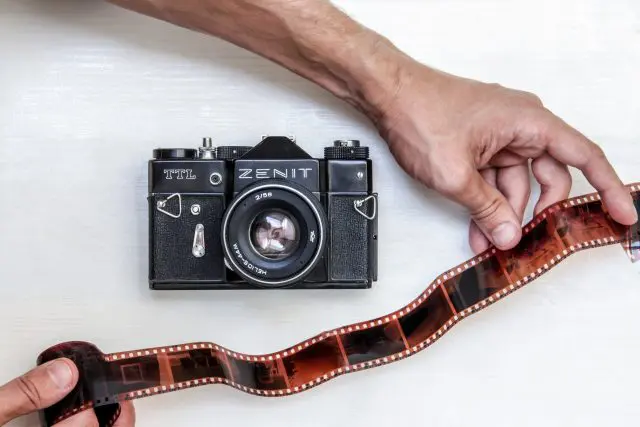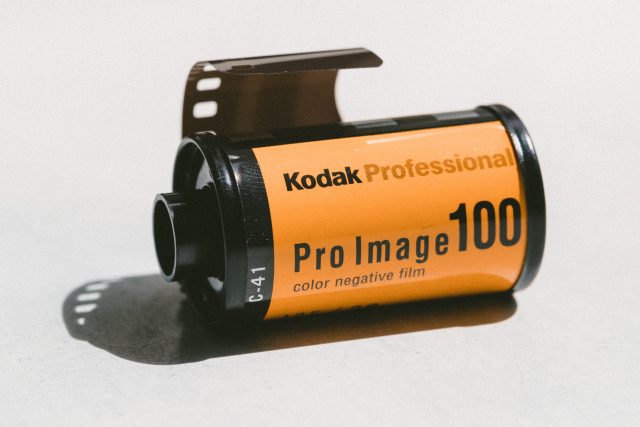Deciding to shoot a roll of film is a big step in your journey as a photographer. When you’ve never used anything but a digital camera, the thought of entering the analog realm with all its requisite hoops to jump through can seem daunting. Film photography is rife with the potential for mistakes that can’t be undone.
All film photographers, however, have at one time or another fallen victim to the same inventory of mistakes. The upside to this is that we can learn from the blunders made by others with a shared passion for this particular medium.
Here are 3 mistakes to avoid when shooting film.
1. Not Loading Your Film Properly
It seems so easy to pop a roll of film in your camera and be on your way, but this may not always be the case. While the basic concept of loading a roll of 35mm film into a camera is relatively uniform, there might be subtle variations from camera to camera. Variations subtle enough to throw you off your game.
Generally, you insert the film cartridge on one side (usually the left), pull the film leader across to the right, make sure it catches the sprocket, attach it to the take-up spool, close the door and wind on to the first frame.
If your film is somehow misaligned or isn’t fully connected to the take-up spool, your film won’t advance and, therefore, won’t record anything. Many cameras have some sort of mechanism to indicate the film is advancing correctly — pay attention to it. If your camera doesn’t have such an indicator, look at the rewind crank/lever. It will rotate counterclockwise, indicating proper film advance.

2. Not Rewinding Your Film
I’ve committed the gaffe of not loading my film correctly, which proved to be costly in terms of wasted time and shots ultimately missed, but once I realized my mistake I simply re-loaded the film properly. No film wasted since it hadn’t advanced.
I have, however, witnessed in horror other photographers, perhaps in harried absent-mindedness, reach the end of a roll and not rewind the film before opening the camera.
The moment your film is exposed to light, that’s a wrap. It’s a gut punch to realize that every shot you’ve taken is now gone. There is no getting them back.
A number of the more automated film cameras have an auto-rewind feature, which is a great safety net. But if your camera lacks that feature, please remind yourself to rewind your film!

3. Choosing The Wrong Film Speed Setting
This is something I put myself through quite recently and is probably the mistake I’ve made most often through my years of shooting film.
With film photography, you’re locked into one film speed (or ISO as we would refer to it in digital photography) per roll. If you load a roll of Kodak Portra 400, you can set your camera to a film speed (ASA) to something other than the speed indicated on the film box, but you’ll need to stay at that setting for the whole roll.
There is no auto ISO in film photography.
Not too long ago I loaded a roll of Kodak Ektar 100 but forgot to change the ASA setting on my camera, which was still set to 1600 for a previous roll of I’d shot. So I spent half a day shooting a 100 speed color film at 1600. Luckily, Ektar proved to be a resilient film and I was pleasantly surprised with the results, considering the circumstances.


Not all film emulsions possess such great latitude. If your work is dependent upon very precise metering, your film speed setting needs to be correct. It’s easy to overlook this as you go from one roll of film to another, but to avoid any unexpected metering mistakes, double check your camera’s film speed setting each time you load a new roll of film.
In Conclusion
Each faux pas listed here is easy to make and also easy to correct. These three things are so basic to film photography that, if you can avoid them, you will probably be pretty happy with your results.
Of course, the further you go into analog photography the more opportunity for mistakes you will encounter, but it’s important to nail the basics first. If you can ease yourself into the process and keep the factors listed above under control, you will free up some mental bandwidth to use on other variables you might encounter along the way.
Always keep in mind, though, that with photography of any kind — digital or analog — the biggest mistake you can make is not allowing yourself the freedom to just have fun.
Additional Resources





3 Comments
Nice article, however after working with film for 50+ years, I’d suggest- no, demand- wearing gloves when handling film. Retouching out fingerprints is near impossible.
Good article! Just one addition for those referencing this article in the future.
Setting your film speed in camera is only applicable if the light meter is working. If your light meter is busted (as is common in many older cameras) setting the film speed won’t do anything, or have any affect on the end image.
The ISO speed in camera is only for determining correct exposure using the built in light meter.
These are all great tips, and things I wished I had known when I started shooting film!
35mm Photography mistakes
We have all flashed rolls! it is indeed
quite cringe worthy!